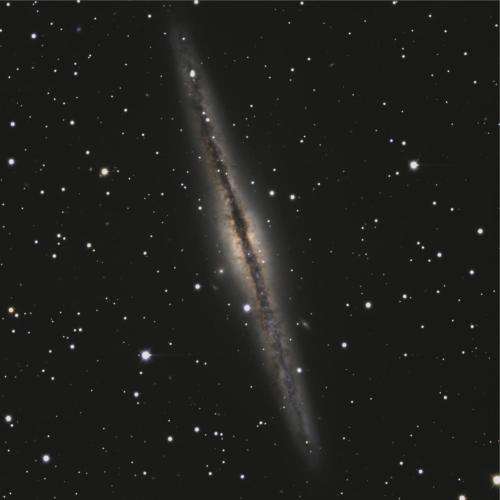Galaxy NGC 891 as imaged by the Large Monolithic Imager (Lowell Observatory)
(Phys.org)—The Large Monolithic Imager (LMI), a camera built at Lowell Observatory and funded by the National Science Foundation (NSF), recently took a set of first-light images on Lowell's 4.3-m Discovery Channel Telescope (DCT). At the heart of the LMI is the largest charge-coupled device (CCD) that can be built using current fabrication techniques and the first of its kind to be made by e2v. The 36-megapixel CCD's active surface is 3.7 inches on a side. The LMI's ability to provide much more accurate measurements of the faint light around galaxies separates it from cameras that use a mosaic of CCDs to produce images.
The attached first-light image is of NGC 891, an edge-on spiral galaxy about 30 million light-years away in the Andromeda constellation. The image was obtained by Lowell's Phil Massey, Ted Dunham, and Mike Sweaton, and then turned into a beautiful color composite by Kathryn Neugent. The exposure consisted of 10×1 min (B), 5×1 min (V), and 6×1 min (R), all unguided.
In the coming months, astronomers from Lowell and its DCT institutional partners—Boston University, the University of Maryland, and the University of Toledo—will be getting many more images like this as the Telescope's commissioning continues.
Provided by Lowell Observatory






















